| This article needs additional citations for verification. Please help improve this article by adding citations to reliable sources. Unsourced material may be challenged and removed. Find sources: "Military aircraft insignia" – news · newspapers · books · scholar · JSTOR (January 2022) (Learn how and when to remove this message) |

Military aircraft insignia are insignia applied to military aircraft to visually identify the nation or branch of military service to which the aircraft belong. Many insignia are in the form of a circular roundel or modified roundel; other shapes such as stars, crosses, squares, or triangles are also used. Insignia are often displayed on the sides of the fuselage, the upper and lower surfaces of the wings, as well as on the fin or rudder of an aircraft, although considerable variation can be found amongst different air arms and within specific air arms over time.
History

France
The first use of national insignia on military aircraft was before the First World War by the French Aéronautique Militaire, which mandated the application of roundels in 1912. The chosen design was the French national cockade, which consisted of a blue-white-red emblem, going outwards from centre to rim, mirroring the colours of the French flag. In addition, aircraft rudders were painted the same colours in vertical stripes, with the blue vertical stripe of the tricolours forwardmost. Similar national cockades were designed and adopted for use as aircraft roundels by the air forces of other countries, including the Royal Flying Corps (RFC) and U.S. Army Air Service.
Germany
Of all the early operators of military aircraft, Germany was unusual in not using circular roundels. After evaluating several possible markings, including a black, red, and white checkerboard, a similarly coloured roundel, and black stripes, it chose a black 'iron cross' on a square white field, as it was already in use on various flags, and reflected Germany's heritage as the Holy Roman Empire. The Imperial German Army's mobilisation led to orders in September 1914 to paint all-black Eisernes Kreuz (iron cross) insignia with wide-flared arms over a white field; usually square in shape, on the wings and tails of all aircraft flown by its air arm, then known as the Fliegertruppe des Deutschen Kaiserreiches. The fuselage was also usually marked with a cross on each side, but this was optional. The form and location of the initial cross was largely up to the painter, which led to considerable variation, and even to the white portion being omitted. An iron cross with explicit proportions superseded the first cross in July 1916. Initially, this second cross was also painted on a white field, but in October 1916, it was reduced to a 5 centimetres (2.0 inches) border completely surrounding the cross, even the ends of the flared arms. That same month, the Army's air arm was renamed Deutsche Luftstreitkräfte. In March 1918, a straight black cross with narrow white borders on all sides of the cross was ordered, but proportions were not set until April 1918, resulting in many of those repainted in the field having non-standard proportions. This was then replaced in May by a narrower, straight-armed cross that extended the full chord of wings, with the white border restricted to the sides of the cross's bars. In June, it ceased to be used full chord, with the bars all being the same length. The white on any of these could be omitted when used on a white background, and sometimes on the rudder or on night bombers.
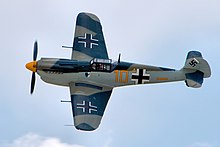
Much like the French roundel, variations of the cross would be used on countries allied with Germany, including the Austro-Hungary (combined with red-white-red stripes on the wings until 1916), Bulgaria, Croatia (stylised as a leaf), Hungary (reversed colours), Romania (a blue-rimmed yellow cross with the tricolour roundel in the middle; the shape was also the stylised monogram of the monarch), and Slovakia (blue cross with a red dot in the middle).
With the dissolution of the German Army's Luftstreitkräfte in May 1920, military insignia would disappear until the rise of the Nazi Party, which imposed new rules on aircraft in 1937, starting with the use of the German red / white / black flag on the tails' starboard side of all aircraft, with the port side showing a Nazi Party flag. When the Luftwaffe's re-establishment was made official, these markings were used by military aircraft, while the 1918 Balkenkreuz crosses were reintroduced. Two standardised proportions of the crosses were introduced by July 1939, with differing widths for the quartet of white 'flanks' on each insignia. When camouflage was introduced prior to the invasion of Poland, the flags were dispensed with, replacing them with a black and white swastika on both sides of the tail. During the ensuing war, the crosses would be further simplified, leaving only the borders in a contrasting colour.
After the Second World War, West Germany reverted to using a variation of the 1916 iron cross, using the white 'flanks' of the Balkenkreuz following the now-curved sides of each arm, while East Germany used a diamond marking based on their flag, with the coat of arms from the flag. The reunification of Germany in 1990 resulted in the West German iron cross replacing the East German insignia for all German military aircraft.
United Kingdom and British Commonwealth nations
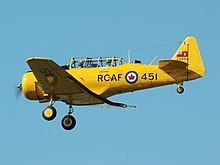
The British Royal Flying Corps (RFC) abandoned their original painted Union Flags because, from a distance, they looked too much like the Eisernes Kreuz (Iron Cross) used on German aircraft. The Royal Naval Air Service (RNAS) used either a plain red ring (with the clear-doped linen covering forming the light coloured centre), or a red-rimmed white circle on their wings for a short period; almost exactly resembling those in simultaneous use by the neutral predecessors of today's Royal Danish Air Force, before both British air arms adopted a roundel resembling the French one, but with the colours reversed, (red-white-blue from centre to rim). The two separate army and naval air arms joined on 1 April 1918 to form the Royal Air Force (RAF).
The British roundel design, with variations in proportions and shades, has existed in one form or another to this very day. The Royal Canadian Air Force (RCAF) roundel was based on the RAF roundel used previously on Canadian military aircraft. From World War I onwards, a variant of the British red-white-blue roundel with the white omitted has been used on camouflaged aircraft, which between the wars meant night bombers. During the Second World War, the colours were toned down and the proportions adjusted to reduce the brightness of the roundel, with the white being reduced to a thin line, or eliminated. In the Asia-Pacific region, the red inner circle of roundels was painted white or light blue to avoid confusion with Hinomaru markings on Japanese aircraft (still used by the Japan Self-Defense Forces to this day), much as the United States roundel omitted the red for the same reason.
After the Second World War, the RAF roundel design was modified by Commonwealth air forces, with the central red disc replaced with a red maple leaf (Royal Canadian Air Force), red kangaroo (Royal Australian Air Force), red kiwi (Royal New Zealand Air Force), and an orange Springbok (South African Air Force); the South African version of the RAF roundel existed until 1958.
United States
Main article: United States military aircraft national insigniaLow-visibility insignia
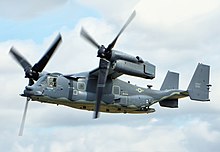
In the later stages of the World War I, the British Royal Flying Corps started using roundels without conspicuous white circles on night-flying aircraft, such as the Handley Page O/400. As early as 1942-43, and again in recent decades, 'low-visibility' insignia have increasingly been used on camouflaged aircraft. These have subdued, low-contrast colours (often shades of grey or black), and frequently take the form of stencilled outlines. Previously, low-visibility markings were used to increase ambiguity as to whose aircraft it was, and to avoid compromising the camouflage, all while still complying with international norms governing recognition markings.
The World War II German Luftwaffe often used such 'low-visibility' versions of their national Balkenkreuz insignia from the mid-war period through to V-E Day, omitting the central black 'core' cross, and only using the 'flanks' of the cross instead, in either black or white versions, which was often done (as an outline only) to the vertical fin or rudder's swastika as well.
Fin flashes

| This section possibly contains original research. Please improve it by verifying the claims made and adding inline citations. Statements consisting only of original research should be removed. (August 2021) (Learn how and when to remove this message) |
In addition to insignia displayed on military aircraft wings and fuselages, usually in the form of roundels, a fin flash may also be displayed on the fin or rudder. A fin flash often takes the form of vertical, horizontal, or slanted stripes in the same colours as the main insignia, similar to a contemporary tactical recognition flash, and may be referred to as 'rudder stripes' if they appear on the rudder instead of the fin, as with the French Armée de l'Air. Alternatively, a national flag or a roundel may be used.
Gallery of insignia
Current insignias of national air forces
See also: List of air forcesImages shown in the following sections are as they appear on the left side of the aircraft (i.e., with the left side of the fin flash leading). In cases where there are no asymmetrical details, such as coats of arms or text that cannot be reversed, the image may be reversed for the right side (such as with the Royal Air Force fin flash) to keep the same side forward, much as with a flag. When a national flag is used, the left side of the aircraft often displays the reverse or back side of the flag as it is normally flown. Exceptions include the German Third Reich's ostensibly 'civilian' aircraft in the 1930s, which used the old black-white-red German flag on the right side of the fin and rudder, and the Nazi Party flag on the left side.
For some countries, a low-visibility variant is also used to avoid compromising aircraft camouflage, and in some cases, to avoid producing a hot spot visible to infrared sensors, such as those used on air-to-air missiles.
-
 Afghanistan
Afghanistan
-
 Albania
Albania
-
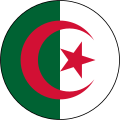 Algeria
Algeria
-
 Angola
Angola
-
 Antigua and Barbuda
Antigua and Barbuda
-
 Argentina
Argentina
-
 Argentina
Argentina
(low visibility) -
 Argentine Naval Aviation
Argentine Naval Aviation
-
 Argentine Naval Aviation
Argentine Naval Aviation
(low visibility) -
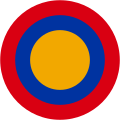 Armenia
Armenia
-
 Australia
Australia
-
 Australia
Australia
(low visibility) -
 Australia
Australia
(army aviation) -
 Austria
Austria
-
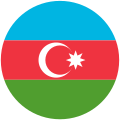 Azerbaijan
Azerbaijan
-
 Bahamas
Bahamas
-
 Bahrain
Bahrain
-
 Bangladesh
Bangladesh
-
 Bangladesh
Bangladesh
(naval aviation) -
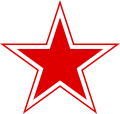 Belarus
Belarus
-
 Belgium
Belgium
-
 Benin
Benin
-
 Bolivia
Bolivia
-
 Botswana
Botswana
-
 Brazil
Brazil
-
 Brazil
Brazil
(low visibility) -
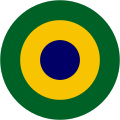 Brazil
Brazil
(naval aviation) -
 Brazil
Brazil
(army aviation) -
 Brunei
Brunei
-
 Bulgaria
Bulgaria
-
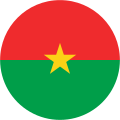 Burkina Faso
Burkina Faso
-
 Burundi
Burundi
-
 Cambodia
Cambodia
-
 Cameroon
Cameroon
-
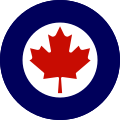 Canada
Canada
-
 Canada
Canada
(low visibility) -
 Central African Republic
Central African Republic
-
 Chad
Chad
-
 Chile
Chile
-
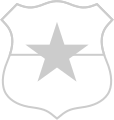 Chile
Chile
(low visibility) -
 Chile
Chile
(naval aviation) -
 People's Republic of China
People's Republic of China
-
 People's Republic of China
People's Republic of China
(low visibility) -
 Republic of China (Taiwan)
Republic of China (Taiwan)
-
 Republic of China (Taiwan)
Republic of China (Taiwan)
(low visibility) -
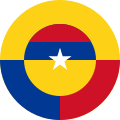 Colombia
Colombia
-
 Colombia
Colombia
(low visibility) -
 Colombia
Colombia
(naval aviation) -
 Colombia
Colombia
(naval aviation,
low visibility) -
 Republic of Congo
Republic of Congo
-
 Democratic Republic of the Congo
Democratic Republic of the Congo
-
 Côte d'Ivoire
Côte d'Ivoire
-
 Croatia
Croatia
-
 Croatia
Croatia
(low visibility) -
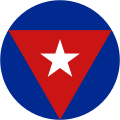 Cuba
Cuba
-
 Cuba
Cuba
(Naval Aviation) -
 Cyprus
Cyprus
-
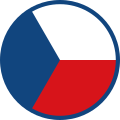 Czech Republic
Czech Republic
-
 Czech Republic
Czech Republic
(low visibility) -
 Denmark
Denmark
-
 Djibouti
Djibouti
-
 Dominican Republic
Dominican Republic
-
 Dominican Republic
Dominican Republic
(low visibility) -
 Ecuador
Ecuador
-
 Ecuador
Ecuador
(naval aviation) -
 Egypt
Egypt
-
 Equatorial Guinea
Equatorial Guinea
-
 El Salvador
El Salvador
-
 Eritrea
Eritrea
-
 Estonia
Estonia
-
 Ethiopia
Ethiopia
-
 Finland
Finland
-
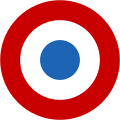 France
France
-
 France
France
(Naval Aviation) -
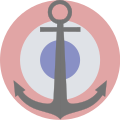 France
France
(naval aviation,
low visibility) -
 Gabon
Gabon
-
 Georgia
Georgia
-
 Georgia
Georgia
(low visibility) -
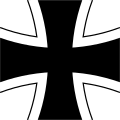 Germany
Germany
-
 Ghana
Ghana
-
 Greece
Greece
-
 Greece
Greece
(low visibility) -
 Guatemala
Guatemala
-
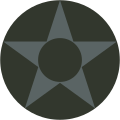 Guatemala
Guatemala
(low visibility) -
 Guinea
Guinea
-
 Honduras
Honduras
-
 Hungary
Hungary
-
 Hungary
Hungary
(low visibility) -
 Iceland
Iceland
-
 India
India
-
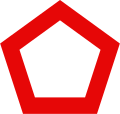 Indonesia
Indonesia
-
 Indonesia
Indonesia
(low visibility) -
 Indonesia
Indonesia
(army aviation) -
 Indonesia
Indonesia
(army aviation,
low visibility) -
 Indonesia
Indonesia
(naval aviation) -
 Indonesia
Indonesia
(naval aviation,
low visibility) -
 Iran
Iran
-
 Iraq
Iraq
-
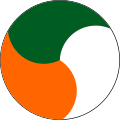 Ireland
Ireland
-
 Israel
Israel
-
 Israel
Israel
(low visibility) -
 Italy
Italy
-
 Italy
Italy
(low visibility) -
 Italy
Italy
(low visibility,
alternate) -
 Italy
Italy
(naval aviation) -
 Jamaica
Jamaica
-
 Japan
Japan
-
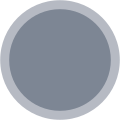 Japan
Japan
(low visibility) -
 Jordan
Jordan
-
 Kazakhstan
Kazakhstan
-
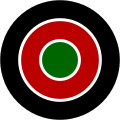 Kenya
Kenya
-
 Kuwait
Kuwait
-
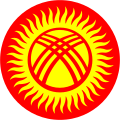 Kyrgyzstan
Kyrgyzstan
-
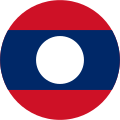 Laos
Laos
-
 Latvia
Latvia
-
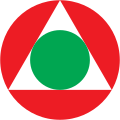 Lebanon
Lebanon
-
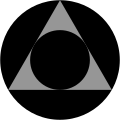 Lebanon
Lebanon
(low visibility) -
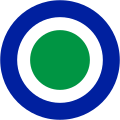 Lesotho
Lesotho
-
 Libya
Libya
-
 Lithuania
Lithuania
-
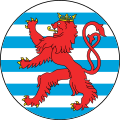 Luxembourg
Luxembourg
-
 Madagascar
Madagascar
-
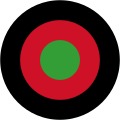 Malawi
Malawi
-
 Malaysia
Malaysia
-
 Malaysia
Malaysia
(low visibility) -
 Malaysia
Malaysia
(alternate) -
 Malaysia
Malaysia
(naval aviation) -
 Malaysia
Malaysia
(naval aviation,
low visibility) -
 Maldives
Maldives
-
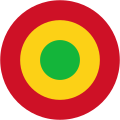 Mali
Mali
-
 Malta
Malta
-
 Mauritania
Mauritania
-
 Mauritius
Mauritius
-
 Mexico
Mexico
-
 Mexico
Mexico
(low visibility) -
 Mexican Naval Aviation
Mexican Naval Aviation
-
 Moldova
Moldova
-
 Mongolia
Mongolia
-
 Montenegro
Montenegro
-
 Montenegro
Montenegro
(low visibility) -
 Morocco
Morocco
-
 Morocco
Morocco
(naval aviation) -
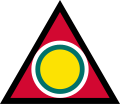 Mozambique
Mozambique
-
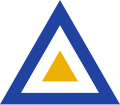 Myanmar
Myanmar
-
 Nepal
Nepal
-
 Netherlands
Netherlands
-
 Netherlands
Netherlands
(low visibility) -
 Netherlands
Netherlands
(low visibility, alternate) -
 New Zealand
New Zealand
-
 New Zealand
New Zealand
(low visibility) -
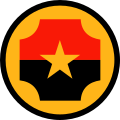 Nicaragua
Nicaragua
-
 Niger
Niger
-
 Nigeria
Nigeria
-
 Nigeria
Nigeria
(naval aviation) -
 North Korea
North Korea
-
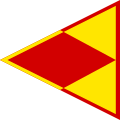 North Macedonia
North Macedonia
-
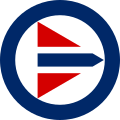 Norway
Norway
-
 Norway
Norway
(low visibility) -
 Oman
Oman
-
 Pakistan
Pakistan
-
 Pakistan
Pakistan
(low visibility) -
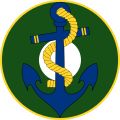 Pakistan
Pakistan
(naval air arm) -
 Panama
Panama
-
 Panama
Panama
(low visibility) -
 Papua New Guinea
Papua New Guinea
-
 Paraguay
Paraguay
-
 Peru
Peru
-
 Peru
Peru
(low visibility) -
 Peru
Peru
(naval aviation) -
 Peru
Peru
(naval aviation,
low visibility) -
 Philippines
Philippines
-
 Philippines
Philippines
(low visibility) -
 Poland
Poland
-
 Portugal
Portugal
-
 Portugal
Portugal
(low visibility) -
 Qatar
Qatar
-
 Romania
Romania
-
 Russia
Russia
-
 Rwanda
Rwanda
-
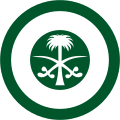 Saudi Arabia
Saudi Arabia
-
 Saudi Arabia
Saudi Arabia
(low visibility) -
 Senegal
Senegal
-
 Serbia
Serbia
-
 Serbia
Serbia
(low visibility) -
 Seychelles
Seychelles
(Air Force) -
 Seychelles
Seychelles
(Coast Guard) -
 Sierra Leone
Sierra Leone
-
 Slovakia
Slovakia
-
 Slovakia
Slovakia
(low visibility) -
 Slovenia
Slovenia
-
 Somalia
Somalia
-
 South Africa
South Africa
-
 South Africa
South Africa
(low visibility) -
 South Korea
South Korea
-
 South Korea
South Korea
(low visibility) -
 South Korea
South Korea
(naval aviation) -
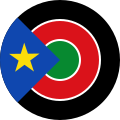 South Sudan
South Sudan
-
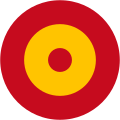 Spain
Spain
-
 Sri Lanka
Sri Lanka
-
 Sudan
Sudan
-
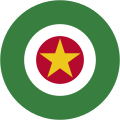 Suriname
Suriname
-
 Sweden
Sweden
-
 Sweden
Sweden
(low visibility) -
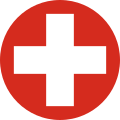 Switzerland
Switzerland
-
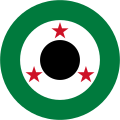 Syria
Syria
-
 Tajikistan
Tajikistan
-
 Thailand
Thailand
-
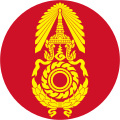 Thailand
Thailand
(army aviation) -
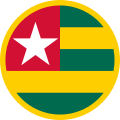 Togo
Togo
-
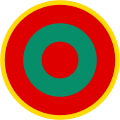 Transnistria
Transnistria
-
 Trinidad and Tobago
Trinidad and Tobago
-
 Tunisia
Tunisia
-
 Turkey
Turkey
-
 Turkey
Turkey
(low visibility) -
 Turkey
Turkey
(Naval Aviation) -
 Turkmenistan
Turkmenistan
-
 Uganda
Uganda
-
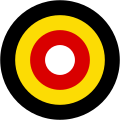 Uganda
Uganda
(alternate) -
 Ukraine
Ukraine
-
 Ukraine
Ukraine
(naval aviation) -
 United Arab Emirates
United Arab Emirates
-
 United Arab Emirates
United Arab Emirates
(low visibility) -
 United Kingdom
United Kingdom
-
 United Kingdom
United Kingdom
(low visibility) -
 United Kingdom
United Kingdom
(low visibility, light) -
 United States
United States
-
 United States
United States
(low visibility) -
 United States
United States
(low visibility, alternate) -
 Uruguay
Uruguay
-
 Uruguay
Uruguay
(naval aviation) -
 Uzbekistan
Uzbekistan
-
 Venezuela
Venezuela
-
 Venezuela
Venezuela
(naval aviation) -
 Vietnam
Vietnam
-
 Yemen
Yemen
-
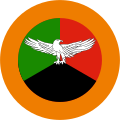 Zambia
Zambia
-
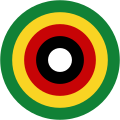 Zimbabwe
Zimbabwe
Government insignia
-
 International Symbol of Civil Defence
International Symbol of Civil Defence
-
 United Nations
United Nations
-
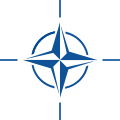 NATO
NATO
-
 Hong Kong Government Flying Service
Hong Kong Government Flying Service
-
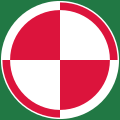 Poland
Poland
Border Guard -
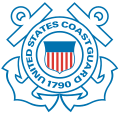 US Coast Guard
US Coast Guard
-
 United States Air Force Civil Air Patrol
United States Air Force Civil Air Patrol
Former insignia of national air forces
-
 Abkhazia
Abkhazia
-
 Emirate of Abu Dhabi
Emirate of Abu Dhabi
(1968–1976) -
 Afghanistan
Afghanistan
(1924–1928) -
 Kingdom of Afghanistan
Kingdom of Afghanistan
(1929–1965) -
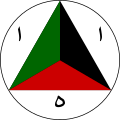 Afghanistan
Afghanistan
(1965–1978) -
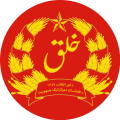 Democratic Republic of Afghanistan
Democratic Republic of Afghanistan
(1979–1983) -
 Democratic Republic of Afghanistan
Democratic Republic of Afghanistan
(1983–1992) -
 Islamic State of Afghanistan
Islamic State of Afghanistan
(1992–2002) -
 Islamic Republic of Afghanistan
Islamic Republic of Afghanistan
(2010–2021) -
 People's Socialist Republic of Albania
People's Socialist Republic of Albania
(1960-1992) -
 Algeria
Algeria
(1962–1964) -
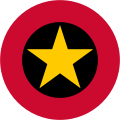 Angola
Angola
(1975–1980) -
 Angola
Angola
(1980–2011) -
 Argentina
Argentina
(naval aviation) -
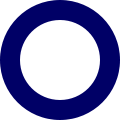 Australia
Australia
(1942–1946) -
 Austro-Hungarian Empire
Austro-Hungarian Empire
(1914–1916) -
 Austro-Hungarian Empire
Austro-Hungarian Empire
(1916) -
 Austro-Hungarian Empire
Austro-Hungarian Empire
(1918) -
 People's Republic of Benin
People's Republic of Benin
(1975–1990) -
 Republic of Biafra
Republic of Biafra
(1967–1970) -
 Bophuthatswana
Bophuthatswana
(1987–1994) -
 Brazilian Air Force
Brazilian Air Force
(1943–1945) -
 Kingdom of Bulgaria
Kingdom of Bulgaria
(1915–1918) -
 Kingdom of Bulgaria
Kingdom of Bulgaria
(1938–1941) -
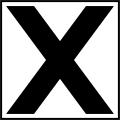 Kingdom of Bulgaria
Kingdom of Bulgaria
(1941–1944) -
 Kingdom of Bulgaria
Kingdom of Bulgaria
(1944–1946) -
 People's Republic of Bulgaria
People's Republic of Bulgaria
(1946–1992) -
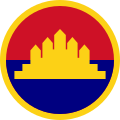 State of Cambodia
State of Cambodia
(1989–1993) -
 Canada
Canada
(1945–1946) -
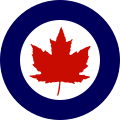 Canada
Canada
(1946–1965) -
 Canada
Canada
(1967 Centennial) -
 Republic of China
Republic of China
(1916–1920) -
 Republic of China
Republic of China
(1920–1928) -
 Republic of China
Republic of China
(naval aviation,
1927–1938) -
 Wang Jingwei regime
Wang Jingwei regime
(1940–1945) -
 Republic of China (Taiwan)
Republic of China (Taiwan)
(1928–1991) -
 Communist China Air Force
Communist China Air Force
(1946–1949) -
 Communist China Air Force
Communist China Air Force
(1946–1949) -
 Communist China Air Force
Communist China Air Force
(1946–1949) -
 Colombia
Colombia
(1927–1953) -
 People's Republic of Congo
People's Republic of Congo
-
 Democratic Republic of the Congo
Democratic Republic of the Congo
-
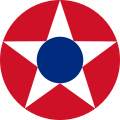 Costa Rica
Costa Rica
(early 1940s-1949) -
 Costa Rica
Costa Rica
(1964–1994) -
 Independent State of Croatia
Independent State of Croatia
(1941) -
 Independent State of Croatia
Independent State of Croatia
(1941–1945) -
 Croatia
Croatia
(1991–1994) -
 Cuba
Cuba
(1955–1959) -
 Cuba
Cuba
(1959–1962) -
 Czechoslovakia
Czechoslovakia
(1918–1920) -
 Czechoslovakia
Czechoslovakia
-
 Kingdom of Egypt
Kingdom of Egypt
(1939–1945) -
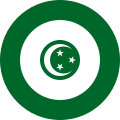 Kingdom of Egypt
Kingdom of Egypt
(1945–1958) -
 Egypt
Egypt
(1958–1972) -
 Ethiopian Empire
Ethiopian Empire
-
 Finland
Finland
(1918–1945) -
 Free France
Free France
(type 1) -
 Free France
Free France
(type 2) -
 German Empire
German Empire
(1914–1918) -
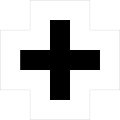 German Empire
German Empire
(1918) -
 German Empire
German Empire
(1918) -
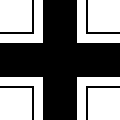 Germany
Germany
(1935–1945) -
 Germany
Germany
(low visibility,
1942–1945) -
 East Germany
East Germany
(1955–1959) -
 East Germany
East Germany
(1959–1990) -
 East Germany
East Germany
(Border Troops) -
 Guinea-Bissau
Guinea-Bissau
-
 Haiti
Haiti
(1942–1964) -
 Haiti
Haiti
(1964–1986) -
 Haiti
Haiti
(1986–1994) -
 Hungarian Soviet Republic
Hungarian Soviet Republic
(1919) -
 Kingdom of Hungary
Kingdom of Hungary
(1938–1941) -
 Kingdom of Hungary
Kingdom of Hungary
(1942–1945) -
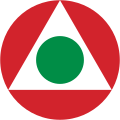 Second Hungarian Republic
Second Hungarian Republic
(1948–1949) -
 Hungarian People's Republic
Hungarian People's Republic
(1949–1951) -
 Hungarian People's Republic
Hungarian People's Republic
(1951–1990) -
 Hungary
Hungary
(1990–1991) -
 British India
British India
(1943–1945) -
 India
India
(1947–1950) -
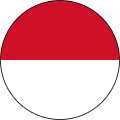 Indonesia
Indonesia
(1946–1949) -
 Indonesia
Indonesia
(National Police) -
 Iraq
Iraq
(1931–2003) -
 Iraq
Iraq
(2008–2019) -
 Ireland
Ireland
(1939–1954) -
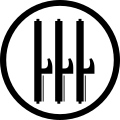 Fascist Italy
Fascist Italy
-
 Italian Social Republic
Italian Social Republic
-
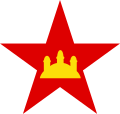 Democratic Kampuchea
Democratic Kampuchea
(1976–1979) -
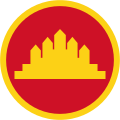 People's Republic of Kampuchea
People's Republic of Kampuchea
(1979–1989) -
 Katanga
Katanga
-
 Khmer Republic
Khmer Republic
(1970–1975) -
 Kingdom of Laos
Kingdom of Laos
(1955–1975) -
 Latvia
Latvia
(1918–1940) -
 Latvia (National Guard)
Latvia (National Guard)
(1993–2000) -
 Kingdom of Libya
Kingdom of Libya
(1962–1969) -
 Libyan Arab Republic
Libyan Arab Republic
(1969–1977) -
 Great Socialist People's Libyan Arab Jamahiriya
Great Socialist People's Libyan Arab Jamahiriya
(1977–2011) -
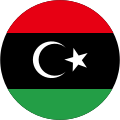 Free Libyan Air Force
Free Libyan Air Force
(2011–2014) -
 Lithuania
Lithuania
(1919-1920) -
 Lithuania
Lithuania
(1920-1921) -
 Malagasy Republic
Malagasy Republic
-
 Malaysia
Malaysia
(1963–1982) -
 Malta
Malta
(1980–1988) -
 Manchukuo
Manchukuo
(Air Force) -
 Manchukuo
Manchukuo
(Air Transport) -
 Mongolian People's Republic
Mongolian People's Republic
-
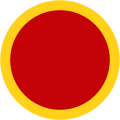 Montenegro
Montenegro
(2006–2018) -
 Mozambique
Mozambique
(1975–2011) -
 Muscat and Oman
Muscat and Oman
(1970–1985) -
 Netherlands
Netherlands
(1914–1921) -
 Netherlands
Netherlands
(1939–1940) -
 New Zealand
New Zealand
(1943–1946) -
 Nicaragua
Nicaragua
(1962–1979)
(wing) -
 Nicaragua
Nicaragua
(1962–1979)
(fuselage) -
 North Vietnam
North Vietnam
(1955–1965) -
 North Yemen
North Yemen
(1957–1962) -
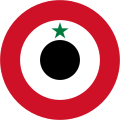 North Yemen
North Yemen
(1962–1990) -
 Norway
Norway
(1914–1940) -
 Ottoman Empire
Ottoman Empire
(Air Squadrons) -
 Ottoman Empire
Ottoman Empire
(Naval Aviation) -
 Philippines
Philippines
(1936-1942)
(1945-1947) -
 Poland
Poland
(1921–1993) -
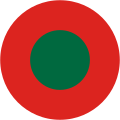 Portugal
Portugal
(1914-1918) -
 (Southern) Rhodesia
(Southern) Rhodesia
(1939–1954) -
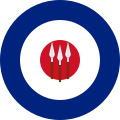 Rhodesia
Rhodesia
(Federation of Rhodesia & Nyasaland)
(1954–1963) -
 (Southern) Rhodesia
(Southern) Rhodesia
(1963–1970) -
 Rhodesia
Rhodesia
(1970–1980) -
 Kingdom of Romania
Kingdom of Romania
(1913–1915) -
 Kingdom of Romania
Kingdom of Romania
(1941–1944) -
 Socialist Republic of Romania
Socialist Republic of Romania
(1947–1985) -
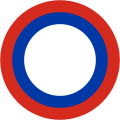 Russian Empire
Russian Empire
(1912–1917) -
 Russia
Russia
(1991–2010) -
 Seychelles
Seychelles
(1978) -
 Singapore
Singapore
(1968–1973) -
 Singapore
Singapore
(1973–1990) -
 Slovak Republic
Slovak Republic
(1940–1945) -
 Slovak Resistance
Slovak Resistance
(1944) -
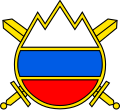 Slovenia
Slovenia
(1991–1996) -
 Union of South Africa
Union of South Africa
(1927–1947) -
 Union of South Africa
Union of South Africa
(1947–1957) -
 South Africa
South Africa
(1957–1994) -
 South Africa
South Africa
(1994–2003) -
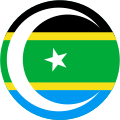 Federation of South Arabia
Federation of South Arabia
-
 South Korea
South Korea
(1949–2005) -
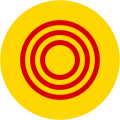 South Vietnam
South Vietnam
(1951–1956) -
 South Vietnam
South Vietnam
(1956–1975) -
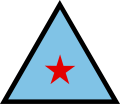 South Yemen
South Yemen
(1968–1990) -
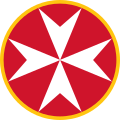 Sovereign Military Order of Malta
Sovereign Military Order of Malta
-
 Somalia
Somalia
-
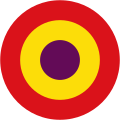 Second Spanish Republic
Second Spanish Republic
(1936–1939) -
 Spanish State
Spanish State
(1936–1939) -
 Spanish State
Spanish State
(wing) -
 Spanish State
Spanish State
(fuselage) -
 Sri Lanka
Sri Lanka
(1951–2010) -
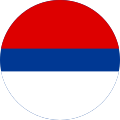 Republika Srpska
Republika Srpska
(variant 1) -
 Republika Srpska
Republika Srpska
(variant 2) -
 Sudan
Sudan
(1956–1970) -
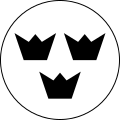 Sweden
Sweden
(1927–1937) -
 Switzerland
Switzerland
(1914–1947) -
 Syria
Syria
(1948–1958) -
 Syria
Syria
(1963–1972) -
 Syria
Syria
(1980–2024) -
 Tanzania
Tanzania
(1965–2010) -
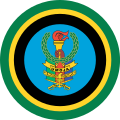 Tanzania
Tanzania
(2010-2019) -
 Thailand
Thailand
(1940–1941) -
 Thailand
Thailand
(1941–1945) -
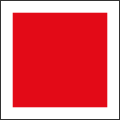 Turkey
Turkey
(1918–1972) -
 USSR
USSR
(1922–1943) -
 USSR
USSR
(1943–1991) -
 Uganda
Uganda
-
 United Arab Emirates
United Arab Emirates
-
 United Kingdom
United Kingdom
(1915–1929) -
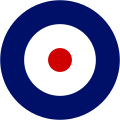 United Kingdom
United Kingdom
(1929–1938) -
 United Kingdom
United Kingdom
(1937–1942) -
 United Kingdom
United Kingdom
(1942–1947) -
 United Kingdom
United Kingdom
Asia-Pacific Front
(1942–1946) -
 United Kingdom
United Kingdom
(naval aviation,
1944–1945) -
 United Kingdom
United Kingdom
(naval aviation,
1944–1945) -
 United States
United States
(1915–1917) -
 United States
United States
(1917–1918) -
 United States
United States
(1918–1919) -
 United States
United States
(1919–1942) -
 United States
United States
(1942–1943) -
 United States
United States
(1943) -
 United States
United States
(1943–1947) -
 Upper Volta
Upper Volta
-
 Venda
Venda
-
 Kingdom of Yugoslavia
Kingdom of Yugoslavia
(1929–1941) -
 SFR Yugoslavia
SFR Yugoslavia
(1945–1991) -
 Serbia and Montenegro (FR Yugoslavia)
Serbia and Montenegro (FR Yugoslavia)
(1992–2006) -
 Zaire
Zaire
(1972–1997)
See also
References
- ^ Kershaw, Andrew (1971). The First War Planes, Friend Or Foe, National Aircraft Markings. BCP Publishing. pp. 41–44.
- "The Royal Air Force Roundel". Royal Air Force History. Royal Air Force. Retrieved 27 April 2009.
- Nelson, Phil (7 February 2009). "Dictionary of Vexillology – fin flash". FOTW.net. Flags of the World. Archived from the original on 21 March 2009. Retrieved 27 April 2009.
Bibliography
- Robertson, Bruce (1967). Aircraft Markings of the World 1912–1967. Letchworth, England: Harleyford Publications.
External links
- Military aircraft insignia
- Roundels of the World
- History of the RAF roundel
- Russian and Soviet aircraft simbols (sic)